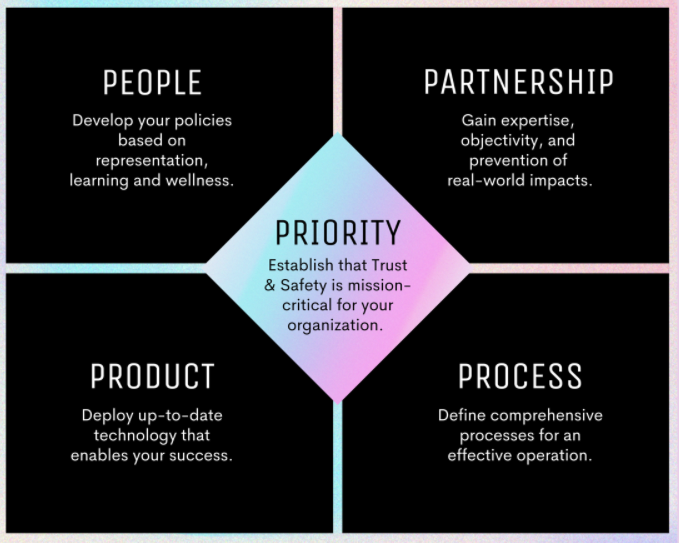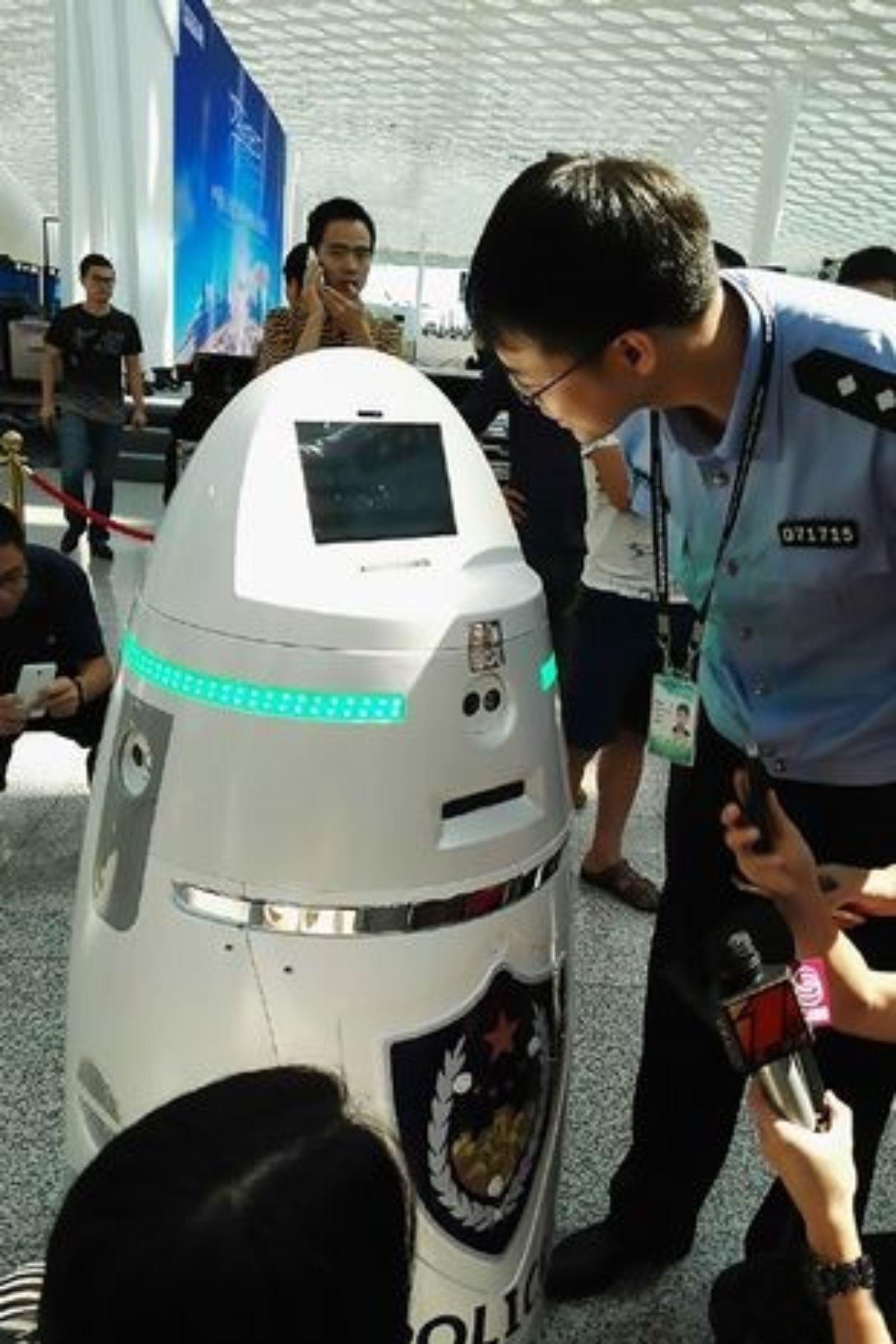24th of November 2022
KEYS FACTORS OF THE ANALYSIS
- Companies in the surveillance and security industry can harness the opportunities offered by the growing demand for collaborative autonomous solutions.
- There are two developing markets within the field of cobots: automated surface vehicles and remotely controlled unmanned vehicles.
- Both solutions can be applied to support human surveillance and defense teams.
- The main areas in which these tools are applied include:
- Surveillance, patrol and maintaining security in public spaces.
- Surveillance and control of restricted marine areas and surfaces.
Cobots, or collaborative robots, are automation systems that, unlike traditional robots, are designed specifically to accompany human operators in a variety of industrial processes. At present, cobots are now present in almost all types of manual tasks, especially those that potentially pose a risk to human workers, such as those that require exposure to high temperatures or the use of sharp materials. Therefore, it is by no means a particularly recent technological innovation, however, it is in the testing phase in the surveillance and security industry with work already under way to implement them as support tools for human security guards in different fields of activity.
The collaborative robot market is expected to grow by 15-20% per year through to 2026
According to data collected by Statista (2), the market for cobots is expected to be worth 1.5 billion dollars globally by 2026. This represents year-on-year growth of between 15 and 20%, compared to the 594 million dollars registered by the market in 2020.
Furthermore, it is expected that by 2022 the most common application of these collaborative robots will be handling materials. Thus, in 2022, 9,600 units will be used in this field and around 7,000 will be used in assembly tasks (1).

As seen in the illustration above, surveillance and security functions are not yet the most widespread functions in which cobots work. However, there is ample room for expansion in other activities and, although many initiatives are still in the research and testing phase, important development examples can already be seen; these could be included in a new emerging market, the market for unmanned autonomous vehicles.
USVs: UNMANNED SURFACE VEHICLES
The variety of research under way in the field of autonomous surveillance systems is in turn driving the growth of a fledging market, which is coming to be known as the USVs (Unmanned Surface Vehicles) market. This market includes two different types of solutions:
- ROSVs (Remotely Operated Surface Vehicles): vehicles with autonomous capabilities, but which are remotely operated by human operators. This group includes pioneering hybrid models, like the Chinese Anbot robot.
- ASVs (Automated Surface Vehicles): autonomous vehicles, including surveillance models of marine areas, such as the Cabo de Palos-Islas Hormigas project that we will take a look at later.
The market for USVs will grow at a year-on-year rate of between 9 and 11% through to 2026.
The different sources of market research consulted agree, estimating annual growth of around 10% for this industry. According to estimates by Markets & Markets (7), in 2021, this market saw turnover of 616 million dollars globally and is expected to grow at a rate of 11% per year to 1.04 billion in 2026, led by North America. In turn, Visiongain forecasts growth of 9.85% year-on-year through to 2031 (8).
The main drivers leading this market growth are:
- Increase in oceanographic research.
- Increase in public investment in military technology and new security and defense systems.
- Increased demand for new solutions for the monitoring, mapping and surveillance of restricted areas and marine areas. These might also have a dual purpose: commercial or security and defense.
In the years to come, new collaboration contracts, agreements and alliances are expected to be established between the different stakeholders involved in this sector:
- Technology firms who develop solutions and devices. For example, Lockheed Martin or L3 Harris, two of the world's main competitors.
- Public authorities: governments, defense/security ministries and departments or R&D institutes, which invest in research in the field of surveillance and the protection of public spaces.
- Companies in the security sector, connecting or link the two previous groups, to make the tools available to the public.
Below, details can be seen of two pioneering initiatives in these new spaces for innovation, both of which belong to the public sector:
ANBOT, THE ROBOT SECURITY GUARD AT CHINA'S AIRPORTS
In April 2021, the Chinese military innovation lab, the National Defense University, under the Ministry for Public Security, officially presented one of the first robot policemen to have been developed in the world.
Anbot, as the robot is called, is a system capable of autonomously patrolling and taking action in violent situations or in response to unrest, developed by the Chinese Government since 2016 (3).
The robot has already been deployed in a number of airports across China, like Shenzhen Airport, performing security guard duties.
Below are the main features and benefits of this robot:
- It measures around one and a half meters in height and weighs 78 kg.
- It has four different operating programs, depending on the needs at the time or in the location in question: patrolling, smart service, facial recognition and emergency response.
- In the shape of a face, it features an oval-shaped digital screen where users can consult flight information and other airport-related issues.
- It is capable of moving either 100% autonomously or by remote control.
- As standard, it travels at a speed of 1 km/h although in an emergency, this can be increased to 18 km/h.
- It comes equipped with a forearm that releases electric shocks, in the form of a taser, which can be used in cases of a direct threat.
- On its patrols, it records and stores images of the airport and travelers using four high definition cameras, which it sends, in real time, to the control posts for analysis.
- It has an approximate cost of $13,300.
- The solution is currently being tested at airports, although the Ministry of Defense aims for it to be rolled out in the near future as part of the surveillance of schools and banks, as well as a smart assistant.
- The benefits offered by this development mainly include: lower workload for police officers and cost savings in relation to security.
VIGIA, THE ASV FOR THE SURVEILLANCE OF MARINE RESERVES IN MURCIA
Another field in which collaborative robots are also starting to make their presence known is in the surveillance and protection of marine areas.
For example, at the Cabo de Palos-Islas Hormigas marine reserve (Cartagena, Murcia), the Division of Automation and Autonomous Robotics (DAyRA), part of the IEER research group at the Polytechnic University of Cartagena (UPCT) has spent the past three years researching a solution using marine drones capable of autonomously monitoring, inspecting and monitoring marine reserves to support surveillance staff and help reduce restricted actions in these areas.
The development team is made up of specialists from three differential fields: electronics, telecommunications and robotics.
The project began in 2019 with the development of an initial prototype dubbed VIGIA, a coastal surveillance system using autonomous surface vehicles (ASV), based at the Los Nietos yacht club in the Mar Menor. Since then, according to the researchers in charge of the project (5), they have successfully tested the system for the autonomous surveillance of designated areas at scale inside the reserve, in favorable wave and wind conditions.
.png)
ASVs make it possible to avoid exposing human personnel to significant risks, in particular when refining their features to also act in extreme conditions. Furthermore, they make it possible to extend the duration and operability of inspection and surveillance actions, as it is possible to perform these over longer periods of time, incorporating the possibility of traveling to or maneuvering through adverse areas.
At present, work continues with a view to making progress with this line of research, as well as building in new technological elements such as the use of artificial intelligence systems for vessel recognition. The aim of this research is to develop a tool that allows control teams to more easily detect the entry of vessels that may pose a threat or risk to the ecosystems in the marine area, such as small fishing boats or recreational boats.
These artificial intelligence systems use models supplied by edge computing to be built into the ASVs and thus expand their scope and capacity for risk detection. This progress can be applied not only to marine reserves but also to other delimited marine space.
Benefits obtained as part of the safety initiatives within the scope of cobots and self-driving vehicles:
Harnessing the growing demand for solutions to ensure the surveillance and security of public spaces and protected environments, as well as the increase in public investment in R&D allocated to defense and security.
Finding synergies with operators from other industries, in the field of technology or public administration.
Increased security for human surveillance teams, avoiding them having to participate in extreme or high-risk situations. For example: access to areas in which there are disturbances or that pose a serious threat to physical integrity.
Increased operability of surveillance plans and systems, making it possible to reach areas that are difficult to access, monitor larger spaces and for longer periods of time, monitor places in real time and take action using remote controls, etc.
Opportunities to improve the supply of security and surveillance systems to: schools, airports, banks, stadiums and a wide variety of public places, as well as mapping and monitoring large surfaces and restricted land and sea regions.
Opportunities to integrate with other technological advances made, such as recognition systems using artificial intelligence.
BIBLIOGRAPHY
1. STATISTA. Projected shipments of collaborative robots (cobots) in 2022, by application. June 2021 [accessed 1/20/2021]. Available at: https://www.statista.com/statistics/1241992/collaborative-robots-shipments-by-application/
2. STATISTA. Projected size of the global market for collaborative robots (cobots) from 2020 to 2026. June 2021 [accessed 1/20/2021]. Available at: https://www.statista.com/statistics/748234/global-market-size-collaborative-robots/
3. POPULAR SCIENCE. China Debuts Anbot, The Police Robot. April 24, 2016 [accessed 1/20/2021]. Available at: https://www.popsci.com/china-debuts-anbot-police-robot/
4. REVISTA DE ROBOTS. Robot Anbot, un policía en el aeropuerto chino. March 19, 2021 [accessed 1/20/2021]. Available at: https://revistaderobots.com/robots-y-robotica/robot-policia-anbot-china-seguridad/
5. LA VERDAD. Robótica para proteger las reservas marinas. March 19, 2021 [accessed 4/28/2021]. Available at: https://www.laverdad.es/tecnologia/investigacion/robotica-proteger-reservas-20210428221753-ntvo.html
6. SCIENCE DIRECT. Cobot attack: a security assessment exemplified by a specific collaborative robot. July 19, 2019 [accessed 2/22/2021]. Available at: https://www.sciencedirect.com/science/article/pii/S2351978921001657
7. SCIENCE DIRECT. Unmanned Surface Vehicle Market by Type (Remotely Operated, Autonomous), System (Propulsion, Payload, Component, Software, Chassis Material, Communication), Application, Hull Type, Endurance, Size, Cruising Speed, and Region - Global Forecast to 2026. December 2021. [accessed 2/22/2021]. Available at: https://www.marketsandmarkets.com/Market-Reports/unmanned-surface-vehicle-market-220162588.html
8. GLOBENEWSWIRE. Global Unmanned Surface Vehicle (USV) Market is Projected to Grow at a CAGR of 9.85% By 2031: Visiongain Research Inc. September 8, 2021 [accessed 2/22/2021]. Available at: https://www.globenewswire.com/news-release/2021/09/08/2293689/0/en/Global-Unmanned-Surface-Vehicle-USV-Market-is-Projected-to-Grow-at-a-CAGR-of-9-85-By-2031-Visiongain-Research-Inc.html
.png)

